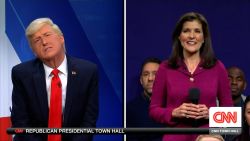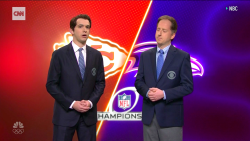BuzzFeed is teaming up with Amazon to start a book club.
The idea for the program, which begins November 1, is a simple — and relatively old — one: Members of the club get discounts on books, and BuzzFeed gets a share of the sales that Amazon makes to members who click on affiliate links.
In fact, the most noteworthy thing about the program might be how un-noteworthy it is.
It’s the latest sign of how BuzzFeed — the website that began as a place for light-hearted quizzes and listicles, and which expanded to include a sizable news division — is looking less like a media revolutionary and more like the rest of the industry.
The company’s selling point had long been “native” content: ads that are paid for by sponsors, but which mimic the look and feel of an article on the website.
But that kind of content is expensive to produce, the ad sales climate is rough, and those ads haven’t been enough to sustain the business on their own. Late last year, The Wall Street Journal reported that BuzzFeed was expected to fall short of its revenue target for 2017 by about 15% to 20%. A few weeks later, the company cut about 100 positions.
“We’ve outgrown the ability to build our business on essentially a single, very distinct revenue stream,” co-founder and CEO Jonah Peretti wrote on BuzzFeed last December. At about the same time, Peretti also told staffers in a memo that the organization needed to “evolve,” adding that a restructured business team would have to bring in “different, more diverse expertise to support these new lines of business.”
Lately, BuzzFeed has been exploring many new revenue streams — some creative, others are very similar to what older, less-buzzy outlets are doing.
For example, while the company still offers native advertising, it also started using traditional display ads in 2017. Those banner ads are powered by the same programmatic software technology that has been used for years by other media publishers.
BuzzFeed has also been working for about a month with Taboola and Outbrain, two companies known for the modules of paid and often sensationalized content they recommend all over the internet. A BuzzFeed spokesperson said they are testing with those companies and aren’t in a long-term relationship with either Taboola or Outbrain.
BuzzFeed launched a product review site over the summer, too. The company will collect a cut of the revenue from readers who make product purchases through affiliate links, much in the same way its book club partnership with Amazon functions. Product reviews on the site range from flat screen televisions to electric toothbrushes. It’s a strategy already employed by many other media companies, including The New York Times and New York Magazine.
The initiative has been “very successful for us,” a BuzzFeed spokesperson told CNN Business.
BuzzFeed has put its own spin on other offerings, including a type of hybrid ad it calls a “BuzzCut.” That’s when BuzzFeed cuts up and repurposes ad spots that a company provides. For example, Subaru provided the company with an ad that featured a dog attempting to drive one of its vehicles. BuzzFeed shortened the clip and captioned it, “me trying to parallel park.” The ads were rolled out in February across Facebook and Instagram.
“Like we have always done, we are always innovating and looking to define ‘modern media company,’” Chief Revenue Officer Lee Brown told CNN Business.

The company has also made a push into product licensing and distribution. This spring, it partnered with Walmart on a line of cookware marketed under the Tasty brand, a division of BuzzFeed made popular by its Facebook cooking videos. The company also has a home goods product line with Macy’s thatcapitalizes on its wellness brand Goodful.It launched last week.
Some of BuzzFeed’s strategies are more elaborate. Brown said the company partnered this summer with the gardening company Scotts Miracle-Gro on a new campaign. BuzzFeed brought in experts from inside and outside of the company to help the gardening business brainstorm new ways to reach customers. The final result was Lunarly, a subscription box service that ships plants and wellness products.
BuzzFeed has also made a push into TV and film — another move similar to what some publishers, such as Conde Nast, have been making.BuzzFeed’s movie studio division has been working on a slew of programs associated with the brand. One production, “Unspeakable Crime: The Killing of Jessica Chambers,” was adapted from a BuzzFeed News story and premiered last month on Oxygen.

Brown declined to say how successful each of those revenue streams has been on their own, though he did say the company has been growing its revenue at “double digits” this year. BuzzFeed is a private company, so it is not obligated to report the same kind of financial information that public companies do.
It’s not yet clear whether BuzzFeed’s strategies will pay off in the long run. Victor Pickard, an associate professor at the University of Pennsylvania’s Annenberg School for Communication, said advertising as a revenue model is in “collapse.”
Other digital media publications, including CNN Digital and Vice, have learned how difficult those financial headwinds can be. Both rely on traditional ad revenue to fuel their businesses, and both laid off staff in the past year. The problems exist in large part because Google and Facebook have such strong control over advertising. The research company eMarketer has reported that last year, those two companies raked in a combined $114 billion in net digital ad revenue worldwide — nearly half the market.
“I hope I am proven wrong because our society desperately needs journalism, especially now,” Pickard said, adding that he was not convinced that “any commercial model at this point can offer long-term support for the kind of news outlet that BuzzFeed aspires to be — and that we as a democratic society need.”
BuzzFeed has at least been tinkering with that idea. Despite the company’s hundreds of millions of dollars in venture capital, its news division has been testing out a donation button.
Solicitations are usually the bailiwick of nonprofit outfits like ProPublica and the Texas Tribune. But BuzzFeed News has been asking for money that way since August.
The company characterized the move as a “trial experiment” for BuzzFeed News, which launched as a standalone site this summer. The News division is otherwise only monetized through studio deals and traditional display advertising. Donations are meant to help keep the website’s reporting free to readers.
The donation option is also key to thwarting off the paywalls that other news outlets use to limit content to paying members — something CEO Peretti has been vocal about.
“If you’re thinking about an electorate and people being informed, the subscription model in media doesn’t help inform the public,” Peretti told The Wall Street Journal last year.
























